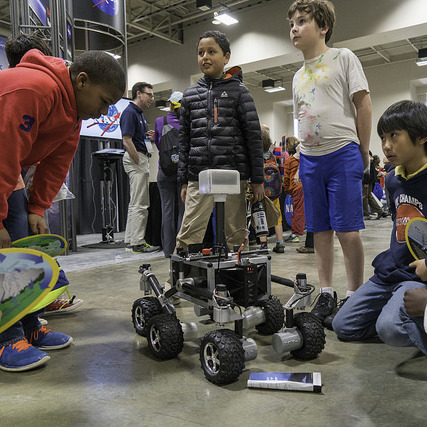176 posts
Latest Posts by techscales-blog - Page 5

‘Head and hands want to join together, but they don’t have the heart to do it…’
Metropolis (1927)

Golden Axe 2, Megadrive / Genesis.

Enduro Racer, arcade.

DUNGEON CRAWL
Mattel Dungeons And Dragons Computer Labyrinth Game
Circa 1980
Right up there with Dark Tower as one of the coolest games ever!

“Leaked” photo of Halo: Gravemind title. Confirmed fake (1) (2).
Here’s a preview of the latest mix on my new Youtube channel. It’d be awesome if you subscribed and checked out the uploads. There will be music daily!
Full Video
Youtube Channel




Unravel is a unique game featuring Yarny, a tiny character made from a thread of yarn that slowly unravels as he explores a lush landscape.

Platinum Headphones

VIRTUAL CLOSET CLEANER
LOW TECH HI TECH
Certified Cool Mattel Electronics Missile Attack Game
Circa 1977








Dead Space 2 difficulty settings.

Play All Four PlayStation Consoles at Sony Square NYC
From the Original to the PS4 Pro








Dead Space artwork
you either play the sims for 10 minutes or 10 hours, there is no common ground ..
The Koss PortaPros: One Month Later
About a month ago, I ordered the Koss PortaPro headphones from Amazon. With $50, I wondered if I could buy anything that could sound substantially better than my Beats Solo HDs. After looking at reviews on CNET, PC Magazine, and the like, I decided to go with the Koss. The PortaPros in particular are known for their audiophile status in headphone circles because of their 80s design. According to Koss, not even the design has changed, which I don’t mind. They’re a rather unique looking pair, and no one is going to confuse them for anything else.
I can say for certain that they sound as well as every review says they are. The PortaPros do not have as much bass as the Solos, but to me, that’s a plus because it’s not masking the lows, the mids, or highs. I’ve listened to Beethoven’s Symphony 9 with both these and the Beats. There really is a difference, and I know now what CNET meant by the Beats’ “muddy sound.”

I don’t claim to be an expert. CNET’s review about the PortaPro’s sound quality is much better than my own analysis, and yet, how comfortable have they been in the month that I’ve had them? It’s takes a little time since the headphones adjust via a fully exposed collapsible steel band. They’re designed so that they fit exactly against the head.

The PortaPros can be adjusted the most spacious setting, which prevents them from collapsing before the user puts them from their head. I found this useful for placing them around the neck when I wasn’t listening to music because the metal band does bite into the neck if it’s not fit properly. However, I don’t find this cumbersome at all.


I’d recommend to not place the earpads directly on the ears when wearing these. Doing so will not affect the sound quality at all, and depending on the individual, this adjustment is anywhere from a millimeter to a centimeter or so. Sometimes, the earpads press too hard on the ear because of the pressure the metal band exerts, but this can be alleviated by the method above or by the comfortZone setting just below the band.
One month later, I can say that I definitely recommend these. They have a learning curve, but it should only take a day or two to get accustomed to its design. The biggest knock on the Koss PortaPros is not sound quality (not by a long shot) but comfort due to its design. Even so, I’d fine the comfort to be better than my $200 Beats Solo HDs. My rating for that is a 3 out of 5, and my overall rating is a 4.25. If you don’t mind the learning curve and the open design, buy these. You won’t regret it - especially since it has a lifetime warranty.
Rating Breakdown:
Sound: 5/5
Design: 4/5
Comfort: 3/5
Customer Service: 5/5
Overall: 4.25/5
Promotional video for the House of Marley's new collection for the canadian market.




“Lapka is a collection of small sensors that attach to your iPhone through the headphone jack. They allow you to take measurements and assess the quality and healthiness of your surrounding environment.”

As the annual tech-fest known as the Consumer Electronics Show gets underway, it’s looking like it will be attack of the drones. Here’s hoping a brave new world includes doughnuts.




SKY & TELESCOPE OFFERS TIPS FOR FIRST-TIME TELESCOPE BUYERS
A telescope is a popular gift, especially so every December. It can be a portal to the universe and provide a lifetime of enjoyment. But there’s no one “perfect” telescope – just as there’s no such thing as a perfect car. Instead, choose a telescope based on your observing interests, lifestyle, and budget. And “buyer beware”: a telescope should not be bought on impulse.
“Don’t expect a lot from the majority of telescopes costing less than $200, and certainly be wary of anything sold in a toy shop or department store,” says Sean Walker, Equipment Editor of Sky & Telescope magazine. “Do some research before buying, and then go to a reputable store or online dealer that specializes in telescopes or related products, such as cameras or consumer electronics.”
Here’s expert advice from the editors of Sky & Telescope to help anyone searching for a first-ever telescope.
Telescope Types
Telescopes come in many shapes, sizes, and prices. Yet all of them fall into one of three general classes: refractors (those that collect light using lenses), reflectors (those with mirrors), and compound telescopes (hybrids of the two). Each has its strengths and weaknesses, but all share the same function: to gather light from a distant object and to form a sharp image that can be scrutinized by eye or camera.
* Refractors have a lens at the front of the tube – it’s the type most people are familiar with. While generally low maintenance, refractors quickly become expensive as the diameter of the main lens increases. In refractor lingo, an apochromat offers better optical quality (and is more expensive) than an achromat of the same size.
* Reflectors gather light using a precisely-shaped curved mirror at the rear of the main tube. For a given diameter, these are generally the least expensive type, but you’ll need to adjust the optical alignment periodically – especially if you bump it around a lot.
* Compound (or catadioptric) telescopes, which use a combination of lenses and mirrors, offer compact tubes and relatively light weight. Two popular designs are called Schmidt-Cassegrains and Maksutov-Cassegrains – look for these phrases in ads or on the telescope itself.
“Whatever design you choose, optical quality should be your top priority,” notes S&T Senior Editor Kelly Beatty. “It’s the key to seeing the night sky at its best.” Running a close second is a solid, steady mount with smooth, dependable motions.
If at all possible, try before you buy – visit a local astronomy club and look through members’ scopes to see which ones you like. If you purchase a unit online, make sure there is a good return policy. Avoid used-equipment offers unless you’re certain about what you’re buying.
What to Look For
Here are important characteristics to look for in any telescope, regardless of type:
Aperture The aperture (diameter) of the primary lens or mirror in your telescope determines two things: light-gathering power and resolving power (the ability to see fine detail). The larger the aperture, the more light your scope collects and the fainter the objects you can see. With increased aperture also comes increased resolution – a larger-aperture telescope will reveal smaller features on the Moon and in distant nebulae and galaxies.
Focal Length and Magnification The distance from the primary lens or mirror to the point where the image of a distant object comes into focus is called the focal length. The magnification, or power, of any telescope-eyepiece combination is easy to calculate: divide the focal length of the scope by that of the eyepiece. So a 25-mm eyepiece used with a refractor having a focal length of 900 mm gives 36 power (900 / 25 = 36), usually written as 36x. As a general rule, twice the aperture in millimeters (or 50 times the aperture in inches) is the maximum usable magnification. Beyond that, the image gets so faint and fuzzy that it seems forever out of focus.
Finder Beginners are frequently surprised at how small a window on the sky their scope presents when used at medium to high power. So all telescopes – regardless of type or design – should be equipped with a high-quality finder, an observing aid that assists in locating celestial objects. Very common these days are “red-dot” finders, which use an LED to project a red dot or centering pattern on the search area but don’t magnify the view.
Mount Type A telescope with the finest optics will be rendered useless without a suitable mount. A good mount (1) holds the instrument firmly with little vibration, (2) allows the tube to be pointed to any part of the heavens quickly and accurately, and (3) permits smooth and precise tracking of a celestial object as Earth’s rotation carries it from east to west across the sky. Two basic types of mounts accomplish these tasks: altazimuth and equatorial.
Alt-azimuth (“alt-az”) mounts, which move up-and-down and side-to-side, require simultaneous manual corrections for two axes to keep celestial objects in view. Unless you have a motor-driven altazimuth mount, for high-magnification visual observations – and especially for faint-object astrophotography – you’ll probably want an equatorial mount.
An equatorial mount also uses two axes, but one of them is aligned parallel to Earth’s axis of rotation by being pointed at the north celestial pole, near Polaris, when viewing from the Northern Hemisphere. Then, once a celestial object has been found, you only have to pivot the scope around its “polar” axis to keep the object in view.
Computerized Scopes Many telescopes use a built-in computer to drive the mount’s motors. Once properly initialized, the computer takes over and can automatically aim the telescope at any desired object and track it as it moves across the sky. This is the essence of a “Go To” telescope. Depending on the sophistication of the system, you might need to enter your viewing location, date, and time at the beginning of an observing session. You might also need to point the scope at two or three bright stars or planets in order to synchronize the instrument’s coordinate system with that of the sky.
Go To scopes aren’t for everyone – the setup process might be confusing if you don’t know how to identify bright alignment stars in the sky. And lower-priced Go To models come with smaller-aperture telescopes than similarly priced, entry-level scopes that have no electronics.
TOP IMAGE….All telescopes gather and concentrate light, but the three basic optical designs — refractors, reflectors, and compound — do so in different ways, as revealed by these cutaway drawings. Sky & Telescope / Gregg Dinderman & Brett Pawson
CENTRE IMAGE….Here are seven important qualities of a good-quality telescope: (1) eyepiece shows a sharp image from edge to edge; (2) smooth focuser with “precise” feel; (3) mount moves smoothly on both axes; (4) mount is sturdy and sta-ble; (5) tube stops shaking quickly after being touched; (6) eyepiece is at a comfortable height for viewing while you are seated; and (7) the finderscope is easy to adjust and look through. Sky & Telescope
LOWER IMAGE….Telescope mounts come in two basic types. An altazimuth mount (left) permits the scope to move up-down and left-right. It’s quick to set up and intuitive to use. An equatorial mount (right) tracks celestial objects by turning just one axis and can be more easily motorized — but to work properly it must be aligned with the North Star (Polaris). Sky & Telescope
BOTTOM IMAGE….When using a traditional finderscope (left), your eye must be very close to its back end, and seeing the crosshairs can be difficult in the dark. A “1-power” finder (right) use a red LED to create the illusion of a reference dot or pattern on the sky. It lets you view your target and the superimposed red dot or circle more comfortably. Sky & Telescope

From an animation shown at the 1991 Consumer Electronics Show in Chicago.







Part of the reason I maintain an extensive library of video game magazines is to get as complete a history as I can on any given subject. I don’t like loose ends! So when I was recently asked to talk on camera about how the American video game enthusiast media of 1995 felt about Nintendo’s RPG masterpiece, EarthBound, I was happy to be able to pull out what I believe to be every review written. And here they all are, lovingly scanned and restored by me! In order:
Electronic Gaming Monthly (July, 1995) Nintendo Power (June, 1995) Game Players (July, 1995) VideoGames (July, 1995) GameFan (”Viewpoint” capsule reviews) (August, 1995) GameFan (full review) (August, 1995) GamePro (July, 1995)
Next Generation and Electronic Games did not review the game. Game Informer appears to have not, but I don’t have the June or September issues, so I can’t say that with 100% certainty (also, if you have Game Informer issues from 1995-1999, we should talk). It’s worth noting that Nintendo Power also had a ten-page extended feature that I did not include, as it’s an overview with no criticism as opposed to a review (heck, even the “review” included here barely qualifies)
The biggest takeaway I get, slapping all these magazines on my desk and reading them back-to-back, is just how completely offended the critics were by the game’s art direction. The “infantile graphics” made VIdeoGames’ Geoff Higgins “want to gag,” apparently. EGM’s John Gurka “laughed out loud” when he first saw the game, while GameFan capsule reviewer Skid’s initial impression was “no way! These graphics are just to [sic] fruity.” Not one reviewer seemed to like the art direction, though some - particularly at GameFan - were able to power through it and enjoy the game underneath.
It’s tempting to look back and roll your eyes at how these critics just didn’t understand, man, just as it’s tempting to look at Nintendo’s “This Game Stinks” marketing campaign as coming from a marketing department that also didn’t understand, man, but I think they both tell us very clearly why this game didn’t catch on: this was a very difficult game to sell in 1995.
Sure, we all basically agree that the game is gorgeous now, but try to put yourself in the mindset of a video game critic in June of 1995, when the game debuted. RPGs were only just catching on in the U.S., ushering in what many felt was the start of “mature” games no longer being exclusively for those rich kids who had computers. Square’s Chrono Trigger was also coming out around the same time, so the sudden switch from the anime-inspired Square house style that most associated with the genre to a look that evoked childlike wonder must have been jarring.
And let’s not forget the rest of the video game industry at the time. Sega’s Saturn and Sony’s PlayStation were already out in Japan (and the former would see a surprise U.S. debut right about when these reviews were written), so for most cutting-edge game enthusiasts, it was starting to look like 2D graphics were a thing of the past. Even Nintendo was starting to leave 2D graphics behind: at that year’s Winter Consumer Electronics Show in January, when EarthBound was quietly shown for the first time, Nintendo’s main focus was on the 3D capabilities of its Super FX chip for the Super Nintendo. Literature from the time shows that its three spotlight games that show all had polygonal 3D graphics: StarFox 2, Comanche, and FX Fighter (literally none of these games actually managed to ship, but that’s another story).
And in the middle of all of this forward-thinking excitement, we’ve got this strange, backward-looking, reflective, beautiful game vying for attention. I can’t imagine a scenario where the game could have been a hit in this environment.
[Aggregating EarthBound’s contemporary review scores gives a figure of about 72%. If this was on Metacritic, that number would be in a yellow box.]

AE1 Digital Car Recorder by COWON SYSTEMS

Peter Bristol for Juniper - Thin Lamp Family

NAP Consumer Electronics Corp, 1981
Five NASA Technologies at the 2017 Consumer Electronics Show
This week, we’re attending the International Consumer Electronics Show (CES), where we’re joining industrial pioneers and business leaders from across the globe to showcase our space technology. Since 1967, CES has been the place to be for next-generation innovations to get their marketplace debut.
Our technologies are driving exploration and enabling the agency’s bold new missions to extend the human presence beyond the moon, to an asteroid, to Mars and beyond. Here’s a look at five technologies we’re showing off at #CES2017:
1. IDEAS
Our Integrated Display and Environmental Awareness System (IDEAS) is an interactive optical computer that works for smart glasses. The idea behind IDEAS is to enhance real-time operations by providing augmented reality data to field engineers here on Earth and in space.

This device would allow users to see and modify critical information on a transparent, interactive display without taking their eyes or hands off the work in front of them.

This wearable technology could dramatically improve the user’s situational awareness, thus improving safety and efficiency.

For example, an astronaut could see health data, oxygen levels or even environmental emergencies like “invisible” ethanol fires right on their helmet view pane.

And while the IDEAS prototype is an innovative solution to the challenges of in-space missions, it won’t just benefit astronauts—this technology can be applied to countless fields here on Earth.
2. VERVE
Engineers at our Ames Research Center are developing robots to work as teammates with humans.

They created a user interface called the Visual Environment for Remote Virtual Exploration (VERVE) that allows researchers to see from a robot’s perspective.

Using VERVE, astronauts on the International Space Station remotely operated the K10 rover—designed to act as a scout during NASA missions to survey terrain and collect science data to help human explorers.

This week, Nissan announced that a version of our VERVE was modified for its Seamless Autonomous Mobility (SAM), a platform for the integration of autonomous vehicles into our society. For more on this partnership: https://www.nasa.gov/ames/nisv-podcast-Terry-Fong
3. OnSight
Did you know that we are leveraging technology from virtual and augmented reality apps to help scientists study Mars and to help astronauts in space?

The Ops Lab at our Jet Propulsion Laboratory is at the forefront of deploying these groundbreaking applications to multiple missions.

One project we’re demonstrating at CES, is how our OnSight tool—a mixed reality application developed for the Microsoft HoloLens—enables scientists to “work on Mars” together from their offices.

Supported by the Mars 2020 and Curiosity missions, it is currently in use by a pilot group of scientists for rover operations. Another HoloLens project is being used aboard the International Space Station to empower the crew with assistance when and where they need it.

At CES, we’re also using the Oculus Rift virtual reality platform to provide a tour from the launchpad at our Kennedy Space Center of our Space Launch System (SLS). SLS will be the world’s most powerful rocket and will launch astronauts in the Orion Spacecraft on missions to an asteroid and eventually to Mars. Engineers continue to make progress aimed toward delivering the first SLS rocket to Kennedy in 2018.
4. PUFFER
The Pop-Up Flat Folding Explorer Robot, PUFFER, is an origami-inspired robotic technology prototype that folds into the size of a smartphone.

It is a low-volume, low-cost enhancement whose compact design means that many little robots could be packed in to a larger “parent” spacecraft to be deployed on a planet’s surface to increase surface mobility. It’s like a Mars rover Mini-Me!

5. ROV-E
Our Remote Operated Vehicle for Education, or ROV-E, is a six-wheeled rover modeled after our Curiosity and the future Mars 2020 Rover.

It uses off-the-shelf, easily programmable computers and 3D-printed parts. ROV-E has four modes, including user-controlled driving to sensor-based hazard-avoidance and “follow me” modes. ROV-E can answer questions about Mars and follow voice commands.

ROV-E was developed by a team of interns and young, up-and-coming professionals at NASA’s Jet Propulsion Laboratory who wanted to build a Mars rover from scratch to help introduce students and the public to Science, Technology, Engineering & Mathematics (STEM) careers, planetary science and our Journey to Mars.
Make sure to follow us on Tumblr for your regular dose of space: http://nasa.tumblr.com



Wega studio 3220 hifi, 1972-75. Photos from the program folder 1974. Wega Stuttgart, Germany.





Smart Camera Uses Sensors, AI to Automatically Edit Video
For many amateur video shooters, the fast-forward button is a valuable friend. It could be, though, that sorting through long minutes of footage when not much is happening for the few seconds of gold is about to be a thing of the past.
The creators of a new high-definition camera called Graava say the pocket-sized device uses its GPS, accelerometer, gyroscope, microphones and image sensor to mark the most interesting moments in video as it is being recorded. It can also take heart-rate readings with an attachable third-party monitor to note exciting moments for the user. Then artificial intelligence pieces those moments together into highlight clips with only the good stuff, which is immediately available to share on social networks. Learn more and see a video below.
Keep reading

Hassleblad
Wikileaks Document Dump Reveals Secret CIA Raccoon Spy Program

Wikileaks has released a trove of documents containing details of CIA hacking tools and surveillance initiatives, among them, a top secret domestic spy program code named RocketEars, that enlists raccoons as listeners.
Security experts and journalists have been poring over the cache of leaked documents, collectively known as “Vault 7,” since Tuesday. Many explain security exploits used in consumer electronics like iPhones and Samsung TVs, which can be used to spy on targets. But the raccoon program is particularly strange.
“No one would ever suspect the raccoon rummaging through your backyard trash is working for the CIA,” says Dennis O’Conner, a security analyst and former consultant to the U.S. intelligence services. “It’s a perfect secret program. But what we don’t understand yet is how the raccoons communicate their surveillance back to base. They’re not the most reliable reporters.”
The Fluffington Post will update this story as it develops.
via Marslettuce

Voyager Watchman FD-20, 1984. VHF & UHF tuner, b/w. Sony Tokyo.